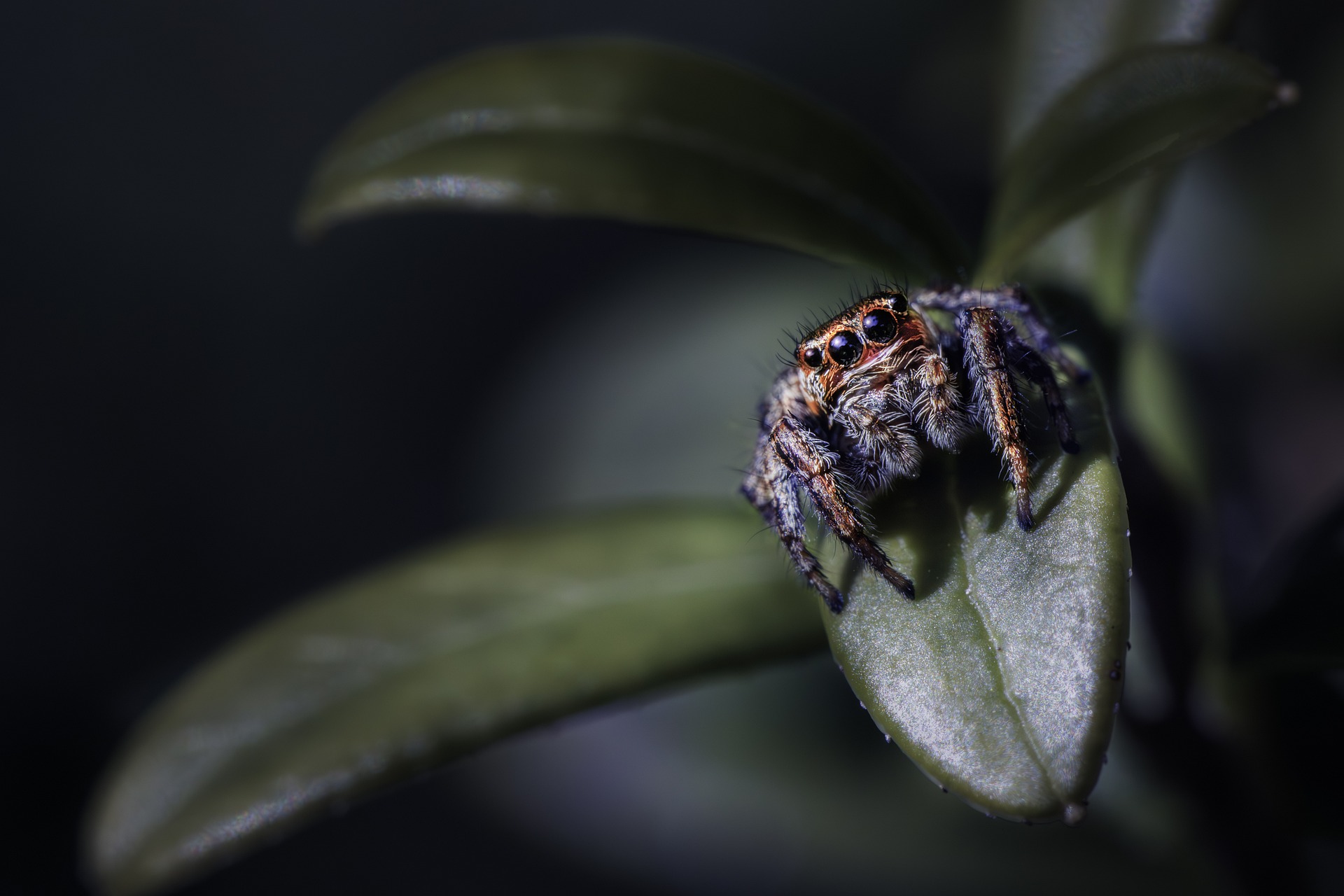Jumping spiders are fascinating creatures known for their agility and unique hunting techniques. Often found in various environments worldwide, these spiders are characterized by their keen eyesight and their ability to pounce on prey with remarkable precision.
If you’ve spotted a jumping spider on a leaf, you’re witnessing one of their common hunting grounds. Jumping spiders are adept at navigating foliage, using it as both camouflage and a platform for hunting. Here’s a brief description of what you might observe:
Appearance: Jumping spiders are relatively small, ranging from a few millimeters to around a centimeter in size. They typically have stout bodies and relatively short legs compared to other spider species. Their most distinctive feature is their large, forward-facing eyes, which give them excellent vision.
Behavior: When you see a jumping spider on a leaf, it might be moving cautiously or actively scanning its surroundings for prey. These spiders are known for their curious behavior and may even seem to exhibit some level of intelligence in their movements.
Hunting: Jumping spiders are active hunters. They use their excellent vision to spot prey, which often includes insects like flies, mosquitoes, and other small arthropods. Once they’ve locked onto a target, they’ll slowly approach it, sometimes even waving their front legs as they prepare to pounce. When they’re ready, they’ll leap with impressive speed and accuracy, often covering several times their body length in a single bound.
Camouflage: Jumping spiders come in a variety of colors and patterns, many of which help them blend in with their surroundings. This camouflage allows them to remain hidden from both predators and prey alike while they wait for the perfect opportunity to strike.
Observing a jumping spider on a leaf provides a glimpse into the complex and fascinating world of these agile hunters. They play a crucial role in controlling insect populations and are a vital part of many ecosystems. So, if you encounter one, take a moment to appreciate the intricacies of nature at work.
Views: 22
Subscribe to the newsletter:
